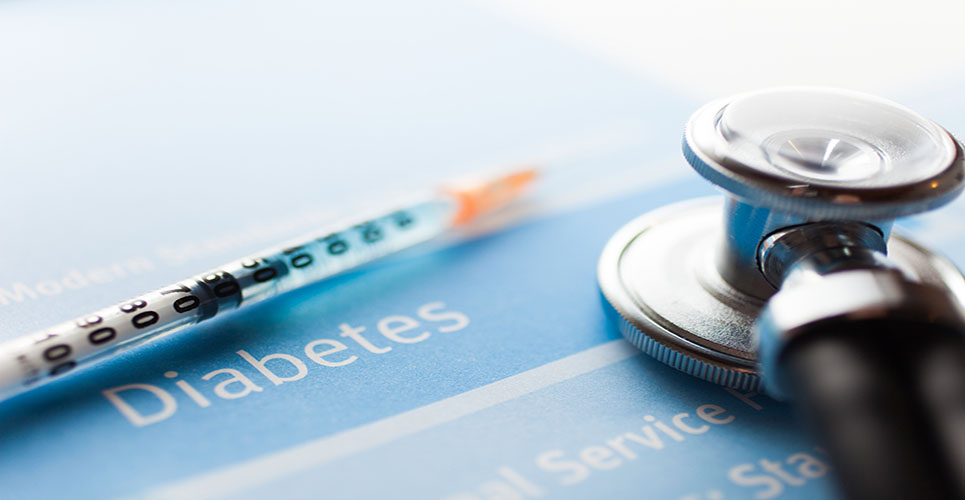teaser
A new study has demonstrated that insulin detemir can be used once daily with a comparable blood glucose response to insulin glargine over a 24-hour period in patients with type 2 diabetes
Peter Finn
HPE Contributing Editor
Results of a head-to-head study show that Levemir (insulin detemir rDNA-origin injection) can be used once daily and has a comparable blood glucose response to insulin glargine over a 24-hour period in patients with type 2 diabetes, it is claimed.
The results were announced at the recent American Diabetes Association (ADA) meeting in San Francisco, USA.
Lead researcher Allen King, of the Diabetes Care Center in Salinas, California, USA, explained: “Our study reinforces that once-daily Levemir has a similar 24-hour action profile as once-daily glargine.”
Research led by Professor King involved comparing the 24-hour blood glucose response of Levemir and glargine.
Levemir is a long-acting insulin analogue indicated for once- or twice-daily subcutaneous administration for treating adults and children with type 1 diabetes mellitus and adult patients with type 2 diabetes mellitus who require basal (long-acting) insulin for control of hyperglycaemia.
Another study, also presented at the ADA meeting, used retrospective data from a large US health-plan database. In this study, Levemir showed no significant difference compared with glargine in terms of daily average consumption and diabetes-related pharmacy costs.
The drug’s Danish-based manufacturer, Novo Nordisk, has also announced what it claims is the first and only full-scale study of once-daily Levemir compared with a single daily dose of glargine to generate the first robust comparative dataset for the two treatments.
Novo Nordisk Chief Science Officer Mads Krogsgaard Thomsen explained: “By establishing the efficacy profiles of these drugs in a direct comparison, we will help physicians choose the best possible treatment for their patients.
“In clinical trials with patients with type 2 diabetes, once-daily Levemir has shown good 24-hour glycaemic control, improved HbA1c control and a low incidence of hypoglycaemic events, without the weight gain observed for other insulins.
“For people with diabetes, once-daily Levemir may thus offer a favourable balance between effect and side-effects.”
The head-to-head, randomised, double-blind crossover study compared the blood glucose response of once-daily Levemir with glargine in a single daily dose over a 24-hour period using continual glucose monitoring system (CGMS).

The results showed that Levemir had a blood glucose response comparable to that of insulin glargine.[1]
Patients with type 2 diabetes using basal insulin without bolus insulin (n = 35) were randomised to receive a single daily injection of Levemir or glargine at 8pm for one week in order to
achieve steady-state levels of insulin in the body. At the end of the week, subjects were switched to the other insulin.[1]
Both insulins were titrated to achieve blood glucose targets during a prespecified basal period (12pm to 6am). No food was eaten between 6pm and 7am in order to obtain accurate basal readings.
Once basal blood glucose targets were achieved, CGMS readings for the last 24-hour period were recorded and mean values compared between treatments using a single-tailed paired t-test.
A retrospective analysis of insulin-naive patients with type 2 diabetes enrolled in a major US health plan compared daily average consumption (DACON) of and glycaemic control with the insulins Levemir and glargine, along with associated medical costs.
Results showed no difference in HbA1c values between Levemir and insulin glargine cohorts, and no significant difference in DACON.
Researchers monitored insulin-naive patients with type 2 diabetes aged 18 and older and enrolled in a large US health plan.
Using propensity score, the investigators found that 48 patients started insulin detemir therapy and 258 started insulin glargine therapy over a six-month period.
Besides reducing selection bias due to observed baseline characteristics, propensity score matching also ensured that patients in insulin detemir and insulin glargine cohorts had similar distributions of baseline characteristics. This ensured that patients included in the insulin detemir and insulin glargine cohorts had similar demographic and clinical profiles.
[[HPE40.66]]
Primary outcomes included DACON of insulin detemir or insulin glargine, HbA1C levels following initiation of insulin therapy, and overall and diabetes-related cost.
Following the six-month analysis period, adjusted DACONs for basal-only insulin detemir and insulin glargine cohorts were 29.3 and 29.6 units per day respectively (p = 0.93). No significant difference in diabetes-related pharmacy cost was observed ($1,277 vs $1,149; p = 0.23).[2]
Levemir was approved by the FDA in June 2005 and launched in the USA in March 2006. It has been available for use in Europe since March 2004 and is currently approved in more than
50 countries.
References
1. King AB, et al. A randomized, crossover, double-blind comparison of insulin detemir and insulin glargine daily blood glucose profiles in subjects with type 2 diabetes. Presented at the American Diabetes Association, June 2008.
2. Borah B, et al. Assessing differences in glycemic control, utilization and costs between insulin detemir (Levemir) and insulin glargine (Lantus) users. Presented at the American Diabetes Association, June 2008.

